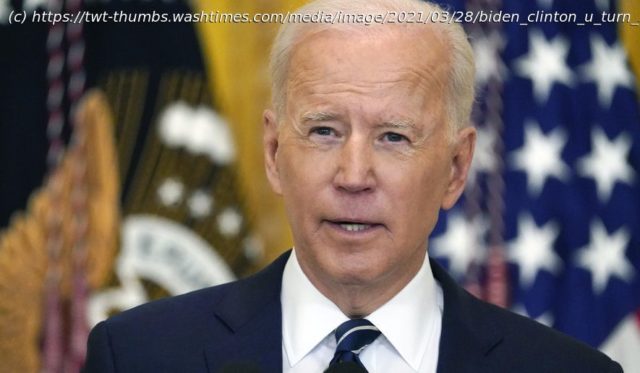When Bill Clinton spoke of how to build a bridge to the 21st century, it was to be constructed with balanced budgets, welfare recipients who …
When Bill Clinton spoke of how to build a bridge to the 21st century, it was to be constructed with balanced budgets, welfare recipients who found jobs and expanded global trade. Three decades later, President Joe Biden is dealing with harsh 21st century realities and his approach has been the exact opposite: Borrow to spur growth, offer government aid without mandating work and bring global supply chains back to the United States. This change in Democratic policy reflects the unique crises caused by the pandemic, as well as decades-old trends such as the rise of economic inequality, the downward slope of interest rates that made borrowing easier and globalization’s pitfalls as factories departed the Midwest. White House aides are comparing the scope of Biden ‘s policy ambitions to Franklin Delano Roosevelt’s after the Great Depression. All of these factors coalesced in Biden ’s $1.9 trillion relief package that his administration is now selling nationwide to voters. And even grander designs are still to come for an infrastructure package and investments in workers that Biden will probably detail in a speech Wednesday in Pittsburgh. “The underlying goal of how do we deepen, broaden and secure America’s middle class has changed with the times,” says Heather Boushey, a member of the White House Council of Economic Advisers. “What happened in 2020 was this huge unmasking of all these fragilities and vulnerabilities in our economy.” Biden ’s relief package — which comes on top of roughly $4 trillion in aid already approved to address the coronavirus fallout — is an effort to strengthen the social safety net that many in his own administration had helped stitch during Clinton’s second term. White House chief of staff Ron Klain held the same job for Clinton’s vice president, Al Gore. Treasury Secretary Janet Yellen was Clinton’s chief economist. Gene Sperling, who oversees the release of the relief money, was director of the National Economic Council back then. Deputy chief of staff Bruce Reed had been the head of Clinton’s Domestic Policy Council. At the time, the Clinton administration seemed to have found a winning formula. The 1996 welfare overhaul signed during the heat of a reelection campaign was designed to end welfare as an entitlement and move aid recipients into jobs, while globalization offered the potential for greater profits for employers.






